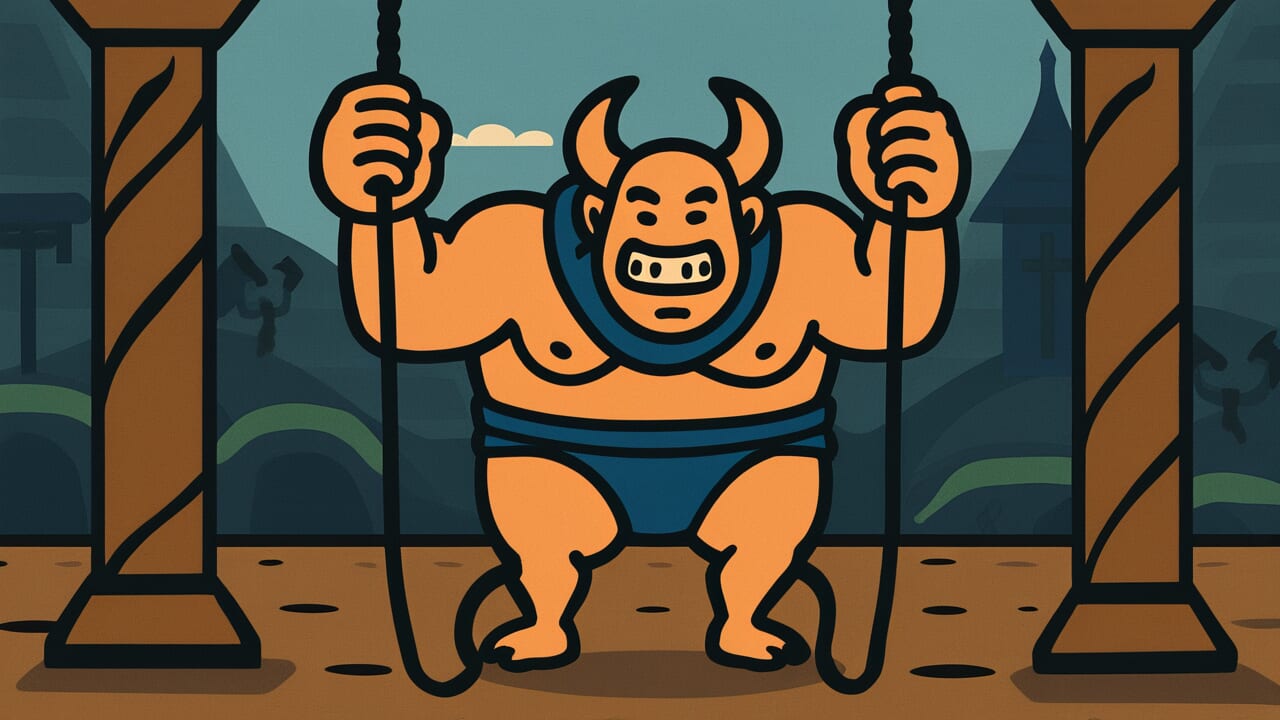How to Read “Tying a demon in the dark”
Kuragari ni oni wo tsunagu
Meaning of “Tying a demon in the dark”
“Tying a demon in the dark” is a proverb that reveals a truth about human society. Wrongdoing happens most easily where no one can see.
This proverb shows us a clear pattern. People who plan to do wrong always choose places and times without supervision.
In bright places or where many eyes watch, nobody wants to do bad things. But in darkness where no one sees, the evil hidden in human hearts comes out more easily.
This teaching still applies today. Corrupt deals happen in closed rooms. Bullying occurs where teachers cannot see.
Online harassment spreads in anonymous spaces. These are all examples of exactly what this proverb warns about.
The expression contains a warning. Where no eyes watch, human true nature appears most clearly.
Origin and Etymology
The exact first written record of this proverb remains unclear. However, the structure of the words offers interesting insights.
“Kuragari” literally means a place without light. “Oni” symbolizes something people fear. The verb “tsunagu” means to tie or bind.
Why does the proverb use “tying” instead of “placing” or “existing”? This choice reveals something important. The word suggests deliberate human action.
Someone intentionally ties a demon in the darkness. This structure has meaning. It shows someone choosing that dark place on purpose.
In traditional Japanese worldview, demons sometimes represented human evil and desire taking physical form. Tying a demon in darkness where no one sees captures something profound.
It perfectly describes how wrongdoers deliberately choose places beyond supervision.
Consider life in the Edo period. Darkness at night posed real danger. Without street lights and with few people around, crime happened more easily.
This proverb may have condensed wisdom born from such lived experience.
Usage Examples
- Fraud kept happening in places without surveillance cameras. That’s exactly “tying a demon in the dark.”
- When online meetings increased and the boss couldn’t watch as closely, some people started slacking off. “Tying a demon in the dark” at work.
Universal Wisdom
“Tying a demon in the dark” teaches us a somewhat sad truth. Human morality depends partly on being watched by others.
Ideally, people should act correctly even when no one sees. But in reality, many people control their desires and bad intentions because other eyes watch them.
This shows human weakness. It also shows wisdom society learned through long history.
That’s why every society has laws, police, and monitoring systems. These don’t come from distrust of humanity. They come from deep understanding of what humans are.
This proverb has been passed down for hundreds of years. Human nature doesn’t change even when times do.
In ancient times and today, wrongdoing happens more easily where no one watches. Our ancestors expressed this universal truth through the vivid metaphor of “tying a demon in the dark.”
At the same time, this proverb asks us a question. When nobody watches you, what kind of person are you?
Your answer might reveal your true character.
When AI Hears This
When you see a shadow in darkness, your brain tries to identify it within 0.1 seconds. At this moment, the brain doesn’t rely only on incomplete information from your eyes.
It creates a prediction first based on past memories and experiences. This mechanism is called predictive coding.
What’s interesting is that when making predictions, the brain always prioritizes “dangerous possibilities.” Imagine seeing a tree branch in darkness and judging it as “just a branch” when it’s actually a bear.
That person could die. But if you overreact thinking “it might be a bear” when it’s actually a branch, you only lose a little energy.
The cost of false recognition and the cost of missing danger are asymmetric.
Research shows that when recognizing objects in dark places, humans perceive them as larger and more threatening over 70 percent of the time. The brain is designed to “err on the safe side.”
Pareidolia makes clouds look like faces. Wall stains look like human figures. The same neural circuits are working.
This cognitive bug was actually an advanced survival strategy. The ability to actively find patterns without fearing false recognition brought humans tool invention and artistic expression.
Because our brains see demons in darkness, humans gained imagination.
Lessons for Today
This proverb teaches modern people the importance of transparency. If wrongdoing happens in darkness, shining light becomes the best countermeasure.
For organizations, this means clarifying decision-making processes and making checking functions work. For individuals, it means taking responsibility for explaining your actions.
Most importantly, recognize that your behavior when nobody watches is your true self.
At the same time, this proverb offers insights for building social systems. We shouldn’t rely only on human goodness. Appropriate monitoring and ensuring transparency are necessary.
This isn’t distrust of humanity. It’s realistic understanding of what humans are.
Ask yourself this question. When nobody watches, what choices do you make? Your answer shows your true worth.
People who can act the same in darkness as in light are truly honest in the deepest sense.



Comments